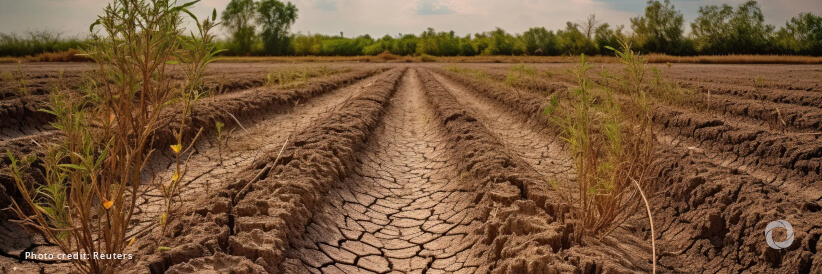Millions of people are facing food insecurity due to El Niño-fueled drought and floods in Southern Africa, WFP Executive Director Cindy McCain warned during a visit to Zambia, at the epicenter of the crisis. Severe drought has wiped out harvests in a region where 70 percent of the population relies on agriculture to survive.
“What I’ve seen in Zambia is not just alarming, it is heartbreaking,” said Director McCain, after speaking with farming families in rural Zambia. “I met farmers who usually grow enough to feed their families and communities. This year they harvested nothing. Now imagine a similar scenario for millions of people throughout Southern Africa, and we have a humanitarian catastrophe.”
Although this El Niño cycle is coming to an end, the impact of extreme drought will have tragic consequences for months to come. Not only have temperatures soared, but the region was also hit with its driest February in decades, resulting in a 20 percent reduction in rainfall at a crucial time for crop growth. The three hardest-hit countries—Zambia, Zimbabwe, and Malawi—have declared states of drought disaster. They face widespread crop losses, with between 40 and 80 percent of their maize harvests decimated.
See also: What are the potential impacts of El Niño on the weather and socio-economic situation in 2023-2024?
At an Extraordinary Summit of the heads of state and government of the Southern African Development Community (SADC) on the current crisis, leaders announced that 61 million people were impacted by El Niño. They launched a humanitarian appeal for US$5.5 billion to supplement the affected member states’ own resources, calling for support to meet the urgent humanitarian needs.
As food runs out, so does the time to respond. “I’m asking the international community to join us and step up now,” added McCain. “We can’t ask millions to wait for the next harvest season – a year from now – to put food on their tables. These families need our support today while we help to build a more resilient future.”
The drought and floods struck at a time when food insecurity and malnutrition were already at alarming levels and humanitarian activities were stalled due to funding shortages. WFP teams have started to respond but US$409 million is needed for six months to assist 4.8 million people in Malawi, Zambia, and Zimbabwe.
These climate extremes serve as a reminder of the urgent need to increase investment in activities that build resilience, especially in Southern Africa where climate shocks severely impact lives and livelihoods.
To help communities prepare for climate disasters before they hit, WFP has been working with governments and partners to roll out solutions. In August 2023, WFP unlocked over US$14 million of anticipatory finance to assist more than 1.2 million people projected to be affected by El Niño. WFP supported communities in Lesotho, Madagascar, Mozambique, and Zimbabwe with early warning messages on weather risks, anticipatory cash transfers, drought-resistant seeds, agricultural training, and improved water sources
WFP is also working with governments to protect communities in the immediate aftermath of climate shocks. In a matter of weeks, WFP will begin disbursing nearly US$10 million in insurance payouts over the coming six months to almost 280,000 affected people, complimenting ongoing national drought responses. This will allow vulnerable households to cope with the impacts of the drought and steadily restore their livelihoods.

